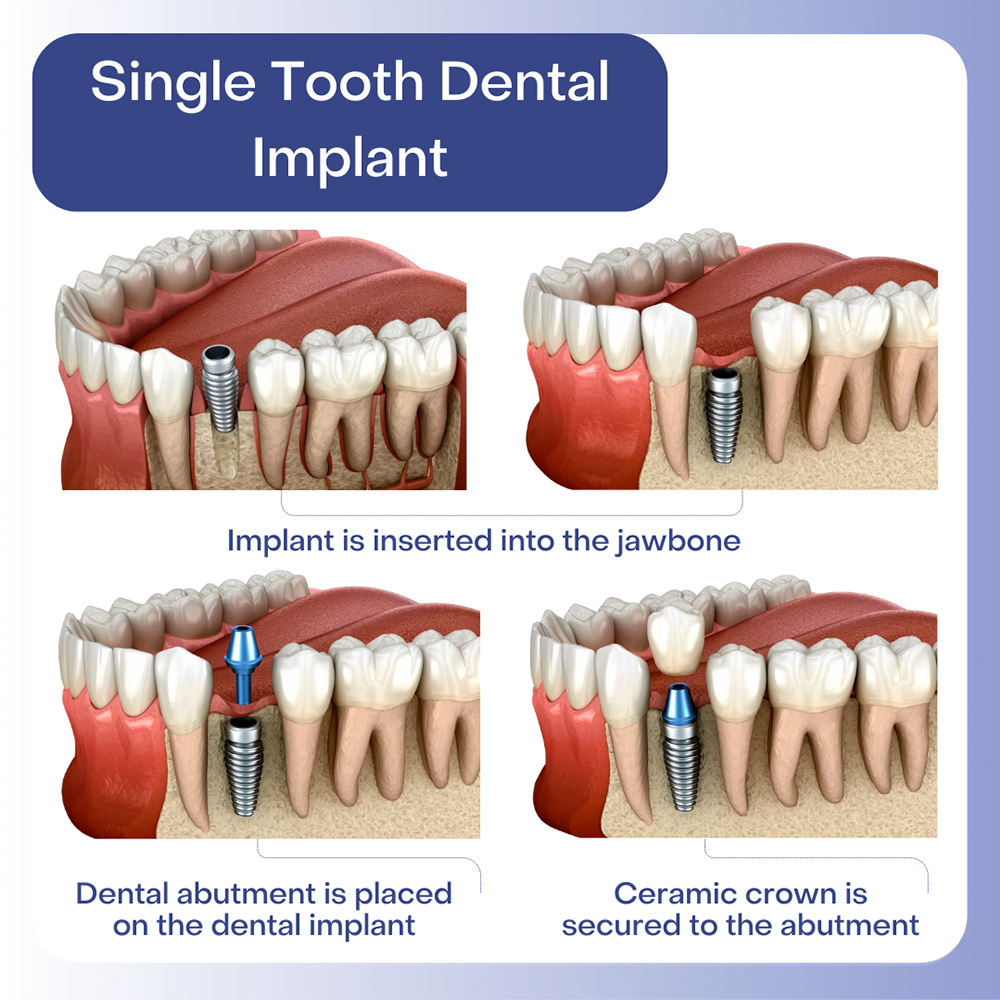Some Known Details About Dental Sense
Some Known Details About Dental Sense
Blog Article
9 Simple Techniques For Dental Sense
Table of ContentsAbout Dental SenseThe 10-Minute Rule for Dental SenseEverything about Dental Sense4 Simple Techniques For Dental Sense
are clinical tools surgically dental implanted into the jaw to bring back an individual's ability to chew or their appearance. They offer support for synthetic (phony) teeth, such as crowns, bridges, or dentures. When a tooth is lost due to injury or illness, a person can experience complications such as rapid bone loss, defective speech, or adjustments to eating patterns that result in discomfort.Dental implant systems include a dental implant body and oral implant joint and might additionally consist of a joint addiction screw. Cosmetic dentistry services. The dental implant body is operatively put in the jawbone in place of the tooth's root. The dental implant joint is normally connected to the implant body by the abutment fixation screw and expands via periodontals right into the mouth to support the affixed synthetic teeth
(https://www.storeboard.com/dentalsense)Structure of The Oral Implant System choosing oral implants, talk to your dental service provider regarding the potential advantages and threats, and whether you are a candidate for the procedure. Things to think about: Your overall wellness is an essential consider establishing whether you are a good candidate for dental implants, exactly how long it will require to recover, and the length of time the dental implant might remain in location.
Smoking may influence the healing process and decrease the lasting success of the implant. The recovery procedure for the implant body might take a number of months or longer, throughout which time you typically have a temporary abutment instead of the tooth. the dental implant procedure: Thoroughly comply with the oral hygiene instructions offered to you by your oral company.
How Dental Sense can Save You Time, Stress, and Money.
Implant failure can cause the demand for another surgical procedure to deal with or replace the implant system. Brings back the ability to chew Brings back aesthetic look Helps maintain the jawbone from shrinking because of bone loss Preserves the health and wellness of the surrounding bone and gums Aids keep surrounding (neighboring) teeth steady Enhances lifestyle Damage to surrounding all-natural teeth during implant positioning Injury to the surrounding tissues throughout surgical procedure, such as sinus perforation Injury throughout surgery (for example, fracture of surrounding jawbone) Insufficient function, such as really feeling like the teeth do not attack with each other typically A feeling that the tooth hangs or twisting in position arising from a joint screw loosening Implant body failing (looseness of the dental implant body) as a result of systemic infection, which may be most likely in patients with unrestrained diabetes mellitus due to local infection in bone and gums supporting the implant body because of delayed healing, which may be a lot more likely in people who smoke Trouble cleaning the gum tissues around the dental implant, resulting in bad oral health Without treatment periodontal illness Post-surgical feeling numb because of nerve impingement or damage Always inform wellness care companies and imaging professionals that you have dental implants prior to any magnetic vibration imaging (MRI) or x-ray procedures.
FDA is not knowledgeable about any damaging occasions reported for MRI or x-ray procedures with oral implants. Dental implants systems are normally made from materials that follow global agreement requirements of the International Organization for Standardization (ISO) or ASTM International. These standards have details of what makes a secure material.

An oral implant is a framework that replaces a missing additional reading out on tooth. With screw-like gadgets, the doctor inserts an implant into the jawbone, and it acts as an anchor for an artificial tooth, called a crown.
The Only Guide for Dental Sense
Some individuals are not qualified for dental implant surgery. It is for oral surgeons to run on individuals with: severe illnessuncontrollable metabolic diseasebone or soft tissue disease or infectionIf these concerns are solved, an individual can have the surgical treatment. In, oral cosmetic surgeons avoid from operating individuals with: If people with any one of the above undertake dental implant surgery, there is a greater risk of the dental implant falling short.

Dental dental implant surgical procedure is a tailored process. It's not the very same for everybody. The adhering to provides a general review of what you can expect your dental expert, oral surgeon, periodontist or prosthodontist to do: Put the implant surgically. Provide you time to recover. Attach the message and final crown, bridge or denture.
Next, your specialist will meticulously place the oral implant right into your jaw. If your implant is near the front of your mouth, your dental practitioner will make a temporary tooth for you to wear till you heal.
Not known Details About Dental Sense
During the recovery phase, your jawbone must fuse to the oral implant. This process can take anywhere from 3 to nine months.
Once your implant heals, your dental professional can connect the abutment (tiny adapter post) and your last restoration (crown, bridge or denture). This usually takes about one hour to finish and might require a second minor surgical procedure. You should not really feel any kind of pain during your oral implant procedure due to the fact that your provider will use drug to numb your gum tissues.
Report this page